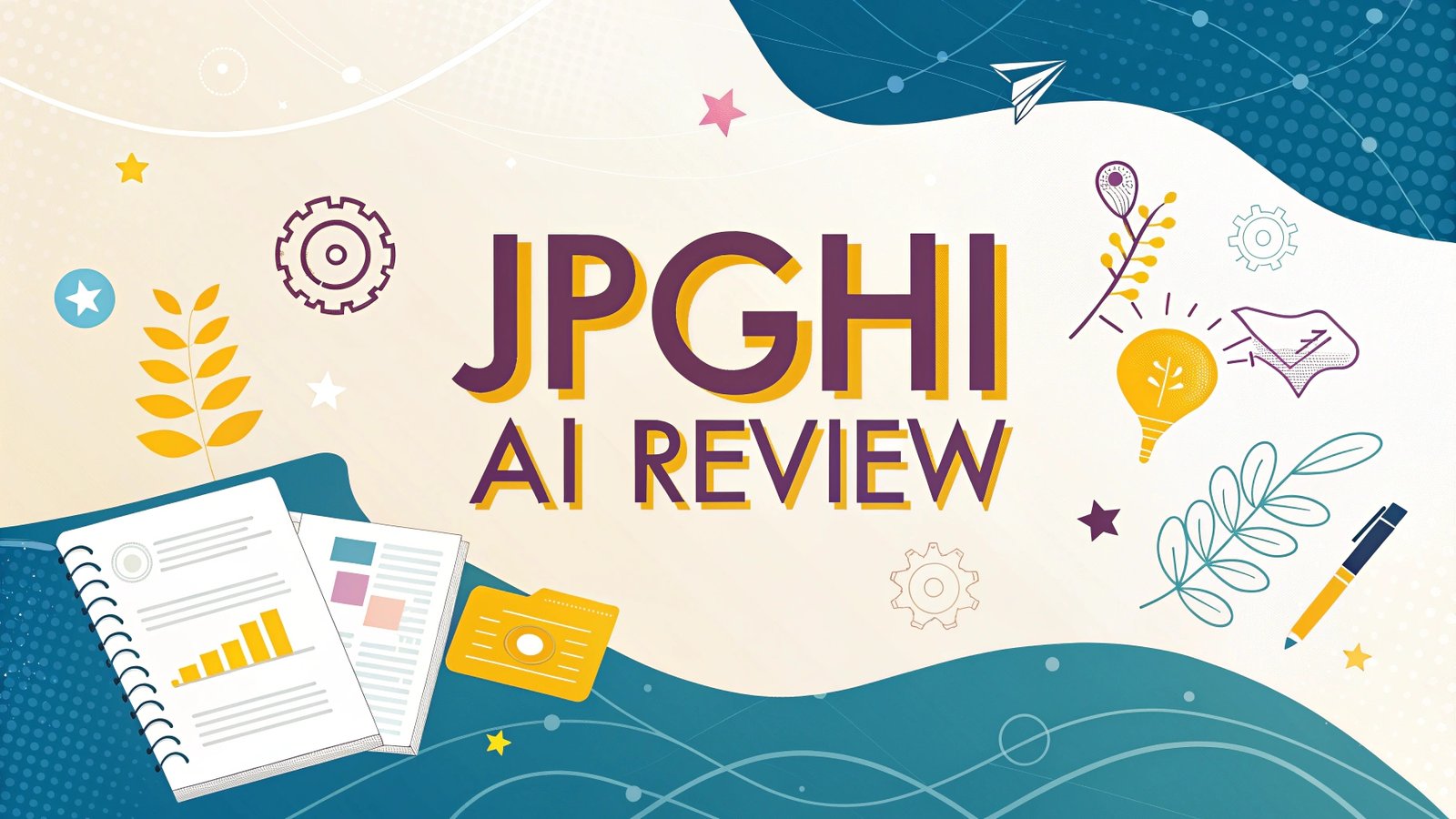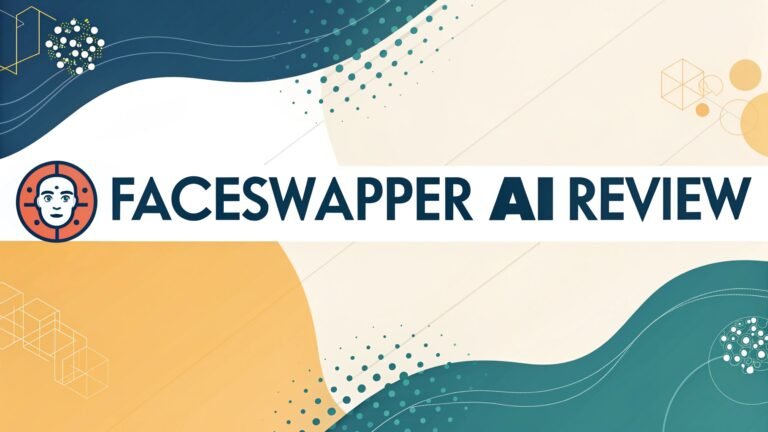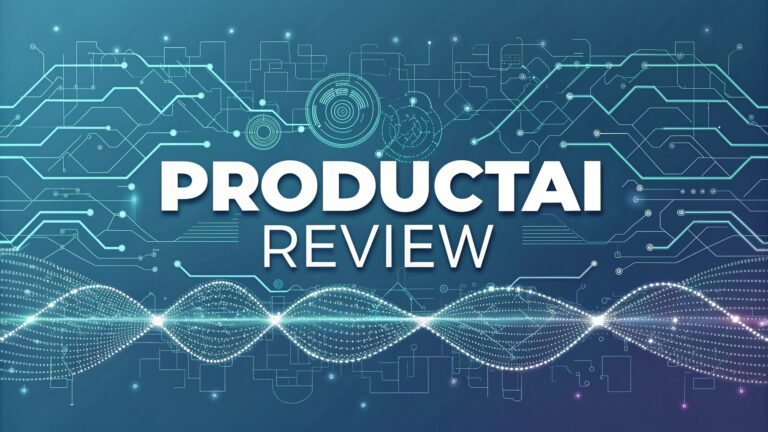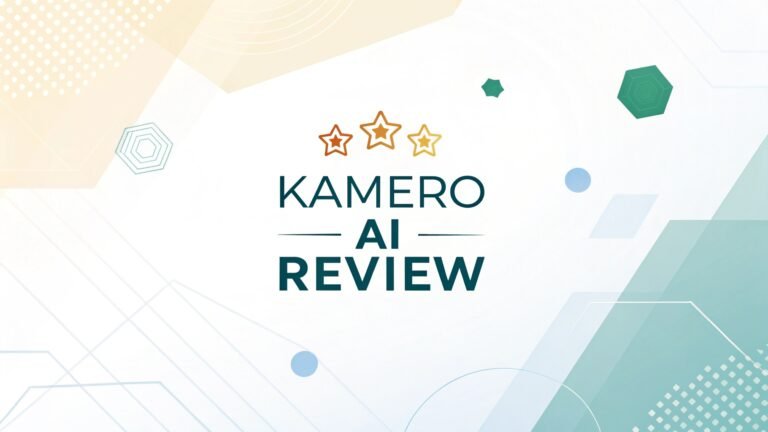jpgHi AI Review: The Ultimate Guide to Lossless Image Upscaling
The world of AI image enhancement has revolutionized how we restore and improve digital images. Among the various tools available today, jpgHi stands out as a powerful solution for lossless image upscaling.
This comprehensive review explores everything you need to know about jpgHi AI, from its core features to real world performance.
Digital images often suffer from low resolution, blurriness, or lack of detail. Whether you’re a photographer, designer, or content creator, the need for high quality images is constant.
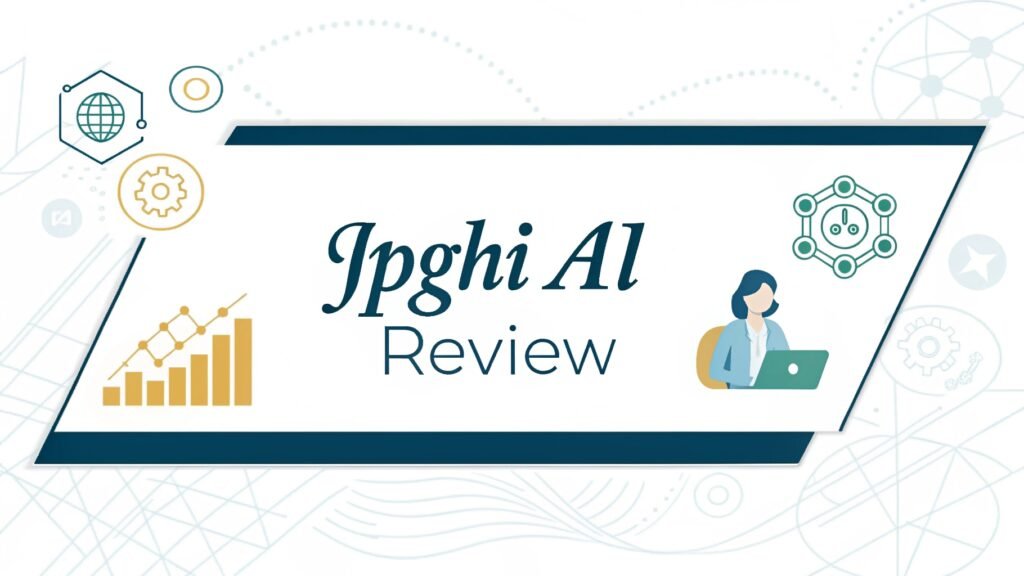
Key Takeaways
Here are the essential points about jpgHi AI that you should know:
- Advanced AI Technology: jpgHi uses the latest AI models running on cloud GPU servers to deliver professional grade upscaling results without quality loss
- Versatile Upscaling Options: The platform supports upscaling from 2x to 16x magnification, allowing users to choose the perfect balance between detail enhancement and processing time
- Dual Image Type Support: jpgHi optimizes processing for both photographic images and cartoon/artwork, ensuring the best results for different content types
- Privacy Focused Approach: All uploaded images are automatically deleted after processing, ensuring complete privacy protection for your visual content
- Flexible Pricing Structure: The service offers both free trials and paid plans with a token based system that scales according to your usage requirements
- Cloud Based Processing: No software installation required, making it accessible from any device with an internet connection while leveraging powerful GPU infrastructure
What is jpgHi AI and How Does It Work
jpgHi AI represents a breakthrough in image upscaling technology that harnesses the power of artificial intelligence to enhance digital images. The platform operates entirely through a web based interface, eliminating the need for software installations or powerful local hardware.
The core technology behind jpgHi utilizes advanced neural networks trained on millions of image samples. These AI models understand how to reconstruct missing details and enhance image quality during the upscaling process. The system analyzes the input image’s characteristics and applies appropriate enhancement algorithms to produce superior results.
What sets jpgHi apart is its use of cloud based GPU servers for processing. This approach ensures consistent performance regardless of your device’s specifications. The AI models run on high performance graphics processors that can handle complex computations required for quality image enhancement.
The platform supports two distinct image categories: photographs and cartoons/artwork. This classification system allows the AI to apply specialized processing techniques optimized for each image type. Photographic images receive treatments that enhance natural details and textures, while cartoon images get processing that maintains clean lines and vibrant colors.
Processing times vary based on the upscaling factor you choose. Simple 2x upscaling typically completes within 1 to 2 minutes, while maximum 16x upscaling can take 30 to 60 minutes. This time investment often proves worthwhile when you consider the dramatic quality improvements achieved.
Core Features and Capabilities
jpgHi offers a comprehensive set of features designed to meet various image enhancement needs. The platform’s primary strength lies in its ability to perform lossless upscaling, meaning you can increase image size without sacrificing quality or introducing artifacts.
The upscaling range spans from 2x to 16x magnification, providing flexibility for different use cases. Lower magnifications like 2x or 4x work well for general image improvement, while higher magnifications like 8x or 16x are ideal for recovering details from very small or low resolution source images.
Detail restoration represents another key capability. The AI doesn’t simply enlarge pixels; it intelligently reconstructs missing information based on surrounding context. This process can recover fine textures, sharp edges, and intricate patterns that would be impossible to restore through traditional upscaling methods.
The platform includes automatic image optimization features that adjust processing parameters based on your input image characteristics. This intelligent approach ensures optimal results without requiring technical knowledge about image processing settings.
Batch processing capabilities allow users to handle multiple images efficiently. While each image processes individually, you can queue several images for sequential processing, making it practical for larger projects.
The system also provides real time progress tracking so you can monitor your image processing status. This transparency helps you plan your workflow and understand when to expect completed results.
User Interface and Experience
The jpgHi interface prioritizes simplicity and effectiveness over complex features. Users encounter a clean, straightforward design that makes image upscaling accessible to people with varying technical backgrounds.
The upload process couldn’t be simpler. You can either click the upload button or drag and drop your image directly onto the webpage. The system accepts various common image formats, making it compatible with most digital photos and graphics.
Image type selection appears as a clear choice between “Photo” and “Cartoon” options. This classification step helps the AI apply appropriate processing algorithms for optimal results. The distinction ensures that photographic images receive natural enhancement while artwork maintains its intended visual style.
Magnification selection presents options ranging from 2x to 16x in a user friendly format. Each option displays the estimated processing time and token cost, helping you make informed decisions about your upscaling requirements.
The processing interface provides clear status updates throughout the enhancement process. You can see exactly where your image stands in the processing queue and receive notifications when processing completes.
Download and management features allow you to access your processed images easily. The system provides high quality downloads while maintaining your original file formats and metadata where possible.
Image Quality and Performance Analysis
jpgHi’s image quality performance varies significantly based on source material and chosen magnification levels. The AI consistently delivers impressive results for most image types, though some scenarios produce better outcomes than others.
Photographic images generally show excellent enhancement, particularly when dealing with portraits, landscapes, and detailed textures. The AI excels at reconstructing skin textures, fabric patterns, and natural elements like foliage or water. Fine details that appear lost in low resolution originals often emerge with surprising clarity after processing.
Cartoon and artwork processing demonstrates jpgHi’s versatility. The AI maintains clean lines and solid color areas while enhancing overall sharpness. This specialized handling prevents the muddy or overly processed appearance that can occur when using generic upscaling algorithms on illustrated content.
Processing speed directly correlates with image complexity and chosen magnification. Simple images with fewer details process faster than complex photographs with intricate textures. The 2x upscaling option provides quick turnaround for users who need rapid results, while higher magnifications require patience but deliver more dramatic improvements.
Artifact management represents one of jpgHi’s strengths. The AI successfully minimizes common upscaling artifacts like pixelation, banding, or unnatural sharpening. Most processed images maintain a natural appearance that doesn’t immediately reveal AI enhancement.
Large file handling capabilities allow jpgHi to process substantial images without size restrictions that limit other tools. This flexibility proves valuable for professional photographers and designers working with high resolution source materials.
Pricing Structure and Plans
jpgHi operates on a token based pricing system that provides flexibility for different usage patterns. This approach allows users to pay only for the processing power they actually consume, making it cost effective for both occasional and regular users.
Free trial options let new users test the service before committing to paid plans. These trials typically include enough tokens to process several images, giving you a realistic sense of the platform’s capabilities and quality standards.
Token consumption rates vary based on your chosen magnification level and image complexity. Lower magnifications like 2x consume fewer tokens per image, while maximum 16x upscaling requires significantly more tokens due to increased computational requirements.
Pricing transparency stands out as a positive aspect of jpgHi’s business model. The platform clearly displays token costs before processing begins, eliminating surprise charges or hidden fees. Users can calculate their expected costs based on their specific upscaling needs.
Bulk processing discounts may be available for users who need to process large quantities of images. The token system naturally provides some economy of scale, as purchasing larger token packages typically offers better per token pricing.
No subscription requirements mean you can use jpgHi on demand without ongoing monthly commitments. This flexibility appeals to users who have sporadic image enhancement needs rather than consistent daily requirements.
Supported Image Formats and Compatibility
jpgHi supports a wide range of image formats commonly used in digital photography and graphic design. This broad compatibility ensures that most users can process their images without format conversion requirements.
JPEG support forms the foundation of jpgHi’s compatibility, as indicated by the platform’s name. The AI handles both standard JPEG files and those with various quality settings, maintaining color accuracy and tonal gradations throughout the enhancement process.
PNG compatibility extends jpgHi’s usefulness to graphics and images requiring transparency support. The platform preserves transparency channels while enhancing the visible image areas, making it valuable for logo enhancement and graphic design applications.
Additional format support may include other common image types like TIFF, BMP, or WebP, though specific format availability should be verified through the platform’s upload interface. The system typically provides clear feedback about supported formats during the upload process.
Color space preservation ensures that enhanced images maintain their original color characteristics. This attention to color accuracy proves crucial for professional photography and design work where color fidelity is paramount.
Metadata handling varies depending on the source format and processing requirements. While jpgHi focuses primarily on image enhancement, it attempts to preserve important metadata where possible, though users should verify that critical information survives the processing workflow.
Privacy and Security Features
Privacy protection represents a fundamental aspect of jpgHi’s service design. The platform implements several measures to ensure user data security and maintain confidentiality throughout the image processing workflow.
Automatic image deletion occurs immediately after processing completion. jpgHi doesn’t store processed images on their servers, eliminating long term privacy risks associated with cloud based image processing. This approach ensures that sensitive or personal images don’t remain accessible after you’ve downloaded your enhanced results.
Secure upload protocols protect your images during the transfer process. The platform uses encrypted connections to prevent unauthorized access to your images while they’re being uploaded to the processing servers.
Processing isolation means that your images are processed independently without cross contamination from other users’ content. This isolation prevents accidental mixing of different users’ images and maintains strict separation between processing jobs.
No user account requirements for basic usage eliminate the need to provide personal information for many processing tasks. This approach reduces the amount of personal data associated with your image enhancement activities.
Geographic data protection ensures compliance with various international privacy regulations. The platform’s privacy practices align with standards like GDPR, providing users with confidence about their data handling procedures.
jpgHi vs Competitors Comparison
The AI image upscaling market includes several notable competitors, each with distinct strengths and limitations. Understanding how jpgHi compares to alternatives helps users make informed decisions about their image enhancement needs.
Topaz Gigapixel AI represents a premium desktop alternative that offers advanced control over processing parameters. While Gigapixel provides more customization options, jpgHi offers greater accessibility through its web based interface and eliminates the need for powerful local hardware.
Waifu2x serves as a popular free alternative, particularly for anime and cartoon style images. However, jpgHi typically produces superior results for photographic content and offers higher maximum magnification levels with more consistent quality.
Let’s Enhance and similar services provide comparable web based functionality but may differ in pricing structures, processing speeds, or maximum file sizes. jpgHi’s token based system often proves more cost effective for users with irregular processing needs.
Adobe’s Super Resolution feature in Lightroom and Camera Raw offers integrated enhancement within existing photo editing workflows. While convenient for Adobe users, jpgHi provides standalone functionality without requiring subscription to Adobe’s Creative Cloud services.
Upscale.media and similar free tools offer basic upscaling capabilities but typically lack the advanced AI models and processing power that jpgHi provides. The quality difference becomes particularly apparent when working with challenging source images or higher magnification levels.
Best Use Cases and Applications
jpgHi excels in specific scenarios where its AI powered enhancement capabilities provide maximum value. Understanding these optimal use cases helps users determine when jpgHi represents the best solution for their needs.
Old photograph restoration represents one of jpgHi’s strongest applications. The AI can recover details from scanned family photos, historical images, or deteriorated prints, breathing new life into irreplaceable memories. The enhancement often reveals details that were barely visible in the original low resolution scans.
Social media content optimization benefits from jpgHi’s ability to enhance images for various platform requirements. Whether you need to upscale profile pictures, improve post images, or enhance graphics for marketing purposes, the AI can deliver platform ready results.
Print preparation scenarios where digital images need enlargement for physical printing see significant value from jpgHi’s capabilities. The AI can transform small digital images into print ready files suitable for posters, banners, or large format displays.
E commerce product photography enhancement allows online retailers to improve product image quality without expensive reshooting. jpgHi can enhance existing product photos to meet higher quality standards demanded by modern e commerce platforms.
Digital art and illustration enhancement helps artists improve their work’s presentation quality. Whether preparing portfolio pieces or enhancing artwork for different display contexts, jpgHi’s cartoon specific processing delivers excellent results.
Limitations and Considerations
While jpgHi offers impressive capabilities, certain limitations affect its suitability for specific use cases. Understanding these constraints helps users set appropriate expectations and choose the right tool for their needs.
Processing time requirements can be substantial for higher magnification levels. The 16x upscaling option may require up to an hour for complex images, making it impractical for urgent projects or real time applications. Users need to plan accordingly when working with tight deadlines.
Token cost accumulation can become significant for users processing large quantities of images or consistently using high magnification settings. While the pay per use model offers flexibility, costs can add up quickly for intensive usage patterns.
Internet dependency means jpgHi cannot function without reliable internet connectivity. This requirement may limit usability in situations where internet access is unreliable or unavailable, unlike desktop alternatives that work offline.
Limited editing capabilities beyond upscaling mean users may need additional tools for comprehensive image editing. jpgHi focuses specifically on enhancement rather than providing full featured photo editing functionality.
Variable results depending on source image quality and content type mean that not all images will benefit equally from AI enhancement. Extremely low quality sources or heavily compressed images may not achieve satisfactory results even with maximum processing power.
Technical Requirements and Setup
jpgHi’s web based architecture minimizes technical requirements while maximizing accessibility across different devices and operating systems. This approach eliminates many common barriers associated with software based image enhancement tools.
Browser compatibility spans all modern web browsers including Chrome, Firefox, Safari, and Edge. The platform works equally well on desktop computers, laptops, tablets, and smartphones, providing consistent functionality across different screen sizes and input methods.
Internet connection requirements include sufficient bandwidth for uploading source images and downloading processed results. While jpgHi doesn’t require extremely high speed connections, faster internet improves the overall user experience, particularly when working with large image files.
Device specifications matter primarily for displaying processed images rather than handling the processing itself. Since all computational work occurs on jpgHi’s cloud servers, users can successfully upscale large images even on lower powered devices like basic laptops or mobile devices.
Storage considerations involve having adequate local storage for downloaded enhanced images. High magnification upscaling can produce substantially larger files than the original images, so users should ensure sufficient available storage space.
File size limitations may exist for uploaded images, though jpgHi generally handles reasonably large source files. Users working with extremely large images should verify size limits before beginning the upload process.
Customer Support and Resources
jpgHi provides various support channels to help users navigate the platform and resolve any issues they encounter during the image enhancement process. The level and quality of support can significantly impact user satisfaction, particularly for new users.
Documentation and tutorials offer guidance on optimal usage practices, including recommendations for choosing appropriate magnification levels and image type classifications. These resources help users achieve better results and avoid common mistakes.
FAQ sections address frequent questions about pricing, processing times, supported formats, and privacy policies. Well organized FAQ content can resolve most common user questions without requiring direct support contact.
Technical support availability varies depending on your user status and the nature of your inquiry. The platform typically provides more comprehensive support for paid users while offering basic assistance for free trial users.
Community resources may include user forums, social media groups, or other platforms where users share experiences and tips. These community driven resources often provide practical insights and creative applications for jpgHi’s capabilities.
Response times for support inquiries depend on the support channel used and the complexity of your question. Email support may take longer than chat based assistance, but often provides more detailed responses for complex technical issues.
Future Development and Updates
jpgHi continues evolving its capabilities through regular updates and enhancements to its AI models and platform features. Understanding the development roadmap helps users anticipate future improvements and plan their long term usage accordingly.
AI model improvements represent ongoing development priorities, with newer models delivering better quality results and faster processing times. These updates typically roll out automatically to all users without requiring additional purchases or upgrades.
Feature expansion may include new image processing capabilities beyond basic upscaling, such as noise reduction, color enhancement, or specialized restoration tools. The platform’s development team likely prioritizes features based on user feedback and market demand.
Performance optimizations focus on reducing processing times and improving system reliability. As cloud computing technology advances, jpgHi can leverage more powerful hardware to deliver faster results without increasing costs.
User interface enhancements aim to improve the overall user experience through better navigation, more intuitive controls, and enhanced progress tracking. These improvements make the platform more accessible to users with varying technical backgrounds.
Integration possibilities might include API access for developers, plugin development for popular image editing software, or partnerships with other creative tools. Such integrations could expand jpgHi’s utility within existing creative workflows.
Final Verdict and Recommendations
jpgHi AI delivers impressive image upscaling capabilities that justify its position among the leading AI enhancement tools available today. The platform successfully balances powerful AI technology with user friendly accessibility, making professional grade image enhancement available to a broad audience.
Strengths include excellent processing quality, flexible pricing options, strong privacy protection, and broad device compatibility. The AI consistently produces natural looking results that avoid common artifacts associated with traditional upscaling methods.
Ideal users include photographers restoring old images, content creators enhancing social media graphics, small business owners improving product photos, and anyone needing to enlarge digital images without quality loss.
Cost effectiveness varies based on usage patterns, but the token system provides good value for most users. Occasional users benefit from pay as you go pricing, while regular users can optimize costs through bulk token purchases.
Alternatives should be considered for users needing offline functionality, extensive editing capabilities beyond upscaling, or integration with existing desktop workflows. Desktop alternatives like Topaz Gigapixel AI may suit professional photographers better, while free tools might suffice for basic enhancement needs.
Overall recommendation: jpgHi AI represents an excellent choice for users seeking high quality, convenient image upscaling without the complexity of desktop software. The platform delivers consistent results, protects user privacy, and provides flexible pricing that scales with usage needs.
Frequently Asked Questions
How long does jpgHi take to process images?
Processing times vary significantly based on the chosen magnification level and image complexity. 2x upscaling typically completes within 1 to 2 minutes, while 4x upscaling takes approximately 5 to 6 minutes. Higher magnifications require more time, with 16x upscaling potentially taking 30 to 60 minutes for complex images.
What image formats does jpgHi support?
jpgHi supports most common image formats including JPEG, PNG, and other standard digital image types. The platform handles both photographic content and cartoon/artwork with specialized processing for each category. Users can upload images directly through the web interface without format conversion requirements.
Is jpgHi safe to use with personal photos?
Yes, jpgHi prioritizes user privacy and security. All uploaded images are automatically deleted immediately after processing completion. The platform uses secure upload protocols and doesn’t store images on their servers long term, ensuring that personal photos remain private throughout the enhancement process.
How much does jpgHi cost to use?
jpgHi uses a token based pricing system where costs depend on the magnification level and image complexity. The platform offers free trials for new users and transparent pricing that displays token costs before processing begins. Users only pay for the processing power they actually consume.
Can jpgHi handle very large images?
jpgHi can process reasonably large images through its cloud based infrastructure. The platform doesn’t impose strict size limitations that restrict many other tools, making it suitable for professional photography and high resolution graphics. However, extremely large files may require longer processing times.
What makes jpgHi different from free alternatives?
jpgHi offers superior AI models running on dedicated cloud GPU servers, resulting in higher quality results than most free alternatives. The platform provides specialized processing for different image types, higher maximum magnification levels, and consistent performance without the limitations often found in free tools.

I’m Liza, the founder and author of Liza AI Blog, where I share my passion for artificial intelligence through insightful guides and updates. I’m dedicated to making AI accessible to everyone, and I strive to create a community that’s both informed and engaged. Through my blog, I aim to promote a deeper understanding and appreciation of AI and its potential to shape our future. You can reach me at lizaaiblog@gmail.com or follow me on social media to stay updated on the latest AI news and trends.

